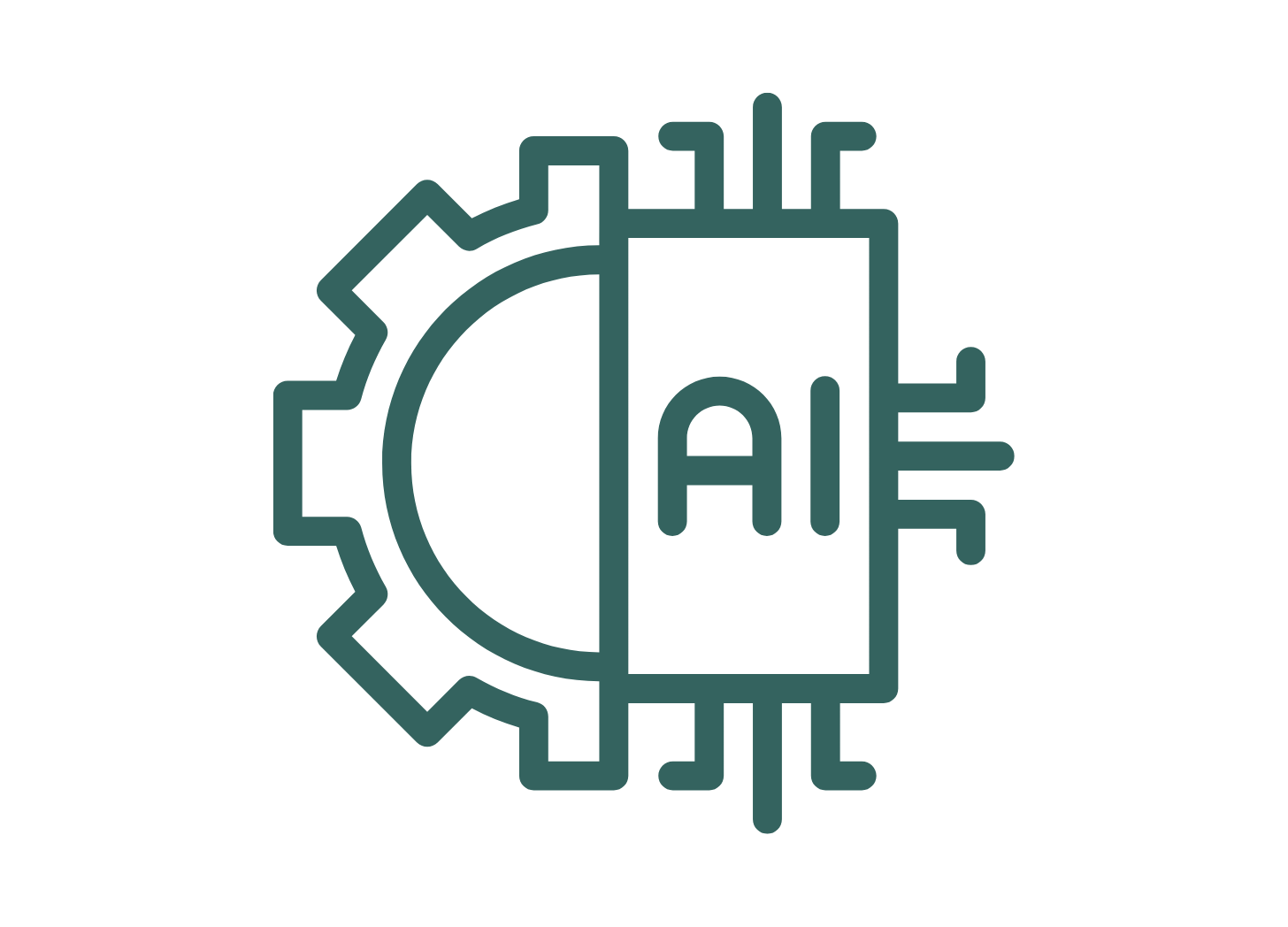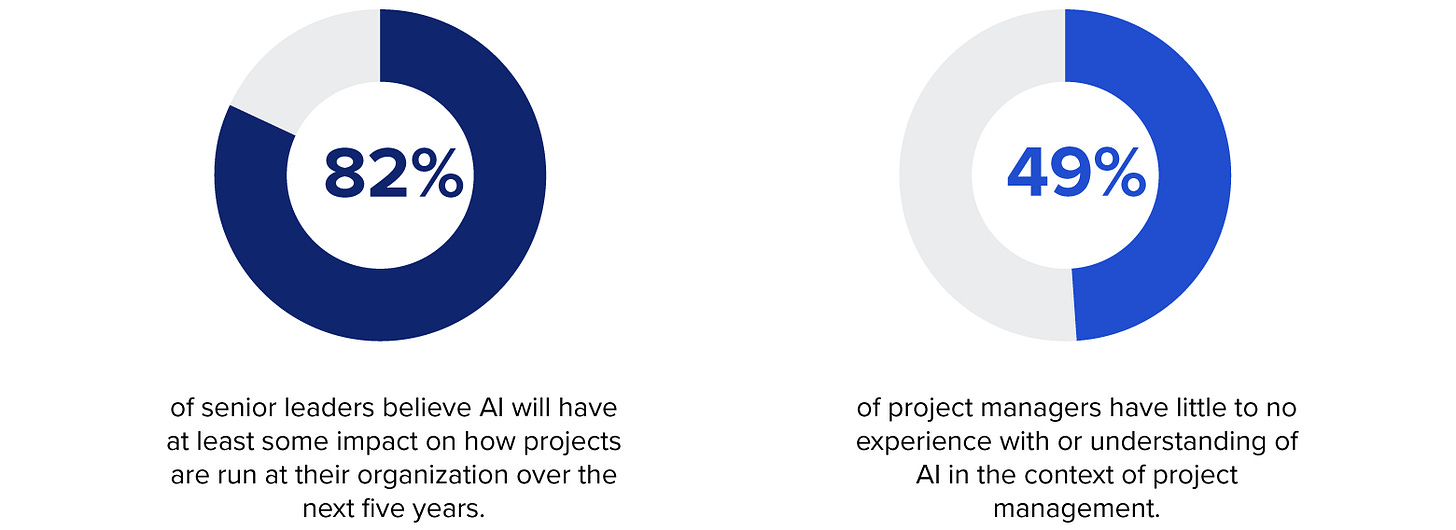The Skills New Project Managers Need for the Age of AI
Artificial Intelligence is here to support project managers to do their job in a better way. But does it also mean doing the job in a different way?
Before we jump into the article, here’s something for you: If you’re not a subscriber yet, you can still grab PMC’s free guide: Leading Better Project Conversations.
It’s packed with strategic questions, feedback tips, and a simple roadmap to lead project conversations that actually move things forward.
✅ Strategic questions to align teams and stakeholders
✅ Feedback prompts to handle issues before they escalate
✅ A clear step-by-step conversation roadmap for project success
Imagine starting your first real project as a PM. You're excited, maybe a little nervous, ready to organize things, align the team, build a timeline, and make things move.
Then, in your second meeting, someone casually says, “This is part of our AI initiative.” Just like that, the room shifts. Acronyms fly. People start talking about models, automation, data pipelines, hallucinations, and prompt engineering.
You're sitting there thinking… I just wanted to manage a project, not join a science fiction plot.
This is happening more often now...
In this piece, we’ll explore why AI projects feel so different and why they throw even seasoned PMs off balance. You’ll see how to lead without being the technical expert, and how to shift from control to curiosity when the path isn’t clear.
We’ll talk about moving from execution to facilitation, and from reporting to storytelling, especially when the data gets weird or hard to explain.
Then we’ll tackle the pressure to perform, and explain why real leadership isn’t about knowing everything, it’s about keeping the team connected when no one’s sure what comes next.
And to wrap it up, there’s an overview on how to learn the job without losing your mind and a quick reflection checklist you can use in your next messy meeting to bring clarity, ask the right questions, and lead with calm.
Sounds good?
Project managers, especially new ones, are being pulled into AI-related work before they’ve even had time to settle into the basics.
It’s not that companies expect you to be a data scientist.
But they do expect you to lead work that involves machine learning, algorithms, and tools that you don’t fully understand.
That’s a strange place to start. You’re supposed to provide clarity in a space that is blurry by default.
There’s no real onboarding for this.
No one sits you down and says, “Here’s how to manage AI projects.”
You just hear things like, “It’s exploratory” or “Let’s try a pilot,” and then someone throws you into the middle of it.
You're expected to take that foggy mess and somehow turn it into progress.
It’s no wonder many new PMs feel like they’re already behind.
But you’re not behind. You're just entering the profession at a very odd time.
And that’s what this article is here for. Not to scare you. Not to explain AI in a technical way either.
But to help you steer the emotional, strategic, and practical shifts that happen when your job starts intersecting with something as fast-moving and ambiguous as artificial intelligence.
Because here’s the thing... You don’t need to be an expert in AI.
But you do need to know how to lead when nobody really knows where things are going.
And that’s actually a skill you can learn. One meeting, one decision, one awkward moment at a time.
Let’s make sense of it together?
Why AI Projects Feel So Different
When people think about project management, they usually picture a kind of organized rhythm.
Tasks, timelines, budgets.
You gather requirements, set goals, get the team aligned, and then track the work to completion. It might not always go perfectly, but at least there’s a sense of structure. You know where the walls are.
Now compare that with what happens when AI is involved.
Suddenly, everything feels a little... too many new things at the same time.
You don’t always have clear outputs. Sometimes you don’t even know what “done” looks like.
People talk about training data, model accuracy, and edge cases.
There’s testing, but it’s not the kind of testing you’re used to.
You might end up with results that change based on the inputs or shift when new data comes in.
And many times, even the experts in the room can’t fully explain why something works the way it does.
For a new PM, this creates a strange kind of discomfort. You're used to showing progress by tracking deliverables. You’re used to feeling useful by removing blockers and keeping things on schedule.
But AI work doesn’t move in that straight line.
What felt like a strong start can suddenly become irrelevant if the model underperforms or the assumptions change.
Another difference is in the team itself.
On a traditional project, you’re usually working with roles you understand. Designers, developers, testers, and business analysts.
With AI, the cast expands. You’re working with data scientists who speak in models and matrices. Maybe researchers. Maybe external vendors are bringing black-box tools. And then, the end users.
Often skeptical, sometimes confused, and always waiting to see if this thing will actually help or just waste their time.
This creates a new kind of pressure. People want someone who can translate the mess into something that makes sense.
Ask, Don’t Perform
There’s a reason why the best questions in AI projects don’t come from the smartest person in the room.
They come from the person willing to admit what nobody wants to say out loud.
Questions like:
What assumptions are we making that could be wrong?
How will this work in the real world, with real users and real pressure?
Who gets hurt if we trust this and it fails?
These aren’t technical questions. They’re leadership questions. And if you're afraid to ask them because you think you’re supposed to already know the answers, the project loses. The team loses. And the users definitely lose.
You don’t have to pretend to know something you don’t understand yet. In fact, most of the best leaders I’ve worked with didn’t try to be experts.
They built trust. They made space for learning. They stayed curious without performing intelligence. They made the work safe for others to question and rethink. That’s how you get to a better solution.
That’s how you get people to actually speak up when something doesn’t feel right.
So the next time you're sitting in a meeting and someone pulls up a chart full of AI metrics and acronyms, don't panic. Ask what it means. Ask how it matters. Ask who it helps.
That’s how you lead. Not by pretending to know, but by making sure the things that matter don’t get lost in the fog of complexity.
And if someone rolls their eyes when you ask, they’re not the smartest person in the room.
They’re just the ones who forgot that projects are about people.
What’s Changing in the PM Skill Set?
Alright, I would love for people to stop pretending this is just a small tweak to the job. It’s not.
Managing AI-influenced projects means shifting how you think, act, and lead. But don’t panic. This is about the nature of the project, not about the project management work alone.
The shift is real, yes… but it’s also possible to learn. And with AI, you have new tools to learn faster.
Let me say this as clearly as I can. You are allowed to not know everything. You are allowed to learn as you go. And you are allowed to lead a team without being the expert in every room you walk into.
Below, let’s understand how you make your moves in this new world.
Want to unlock more practical systems to help you lead projects with clarity and confidence? Subscribe now and get 20% off your first year.
Paid subscribers unlock:
🔐 Weekly premium issues packed with frameworks and/or templates
🔐 Access to special toolkits (including the Starter Pack with your subscription)
🔐 Strategic guides on feedback, influence, and decision-making
🔐 Exclusive content on career growth, visibility, and leadership challenges
🔐 Full archive of every premium post
Plus, you get a Starter Kit when you subscribe, which includes:
🔓 Kickoff Starter: Kickoff Checklist, Kickoff Meeting Agenda Template, Project Canvas Deck, Kickoff Email Template, Sanity Check Sheet
🔓 Stakeholder Clarity: Stakeholder Power Map, Expectation Tracker Sheet, Backchannel Radar Questions, First Conversation Checklist + Script
🔓 PMC Status Report Survival Toolkit: Status Report Checklist, 1-Page Status Email Template, RAG Status Guide (Red–Amber–Green done right), Bad News Script Cheat Sheet
Keep reading with a 7-day free trial
Subscribe to Project Management Compass to keep reading this post and get 7 days of free access to the full post archives.







